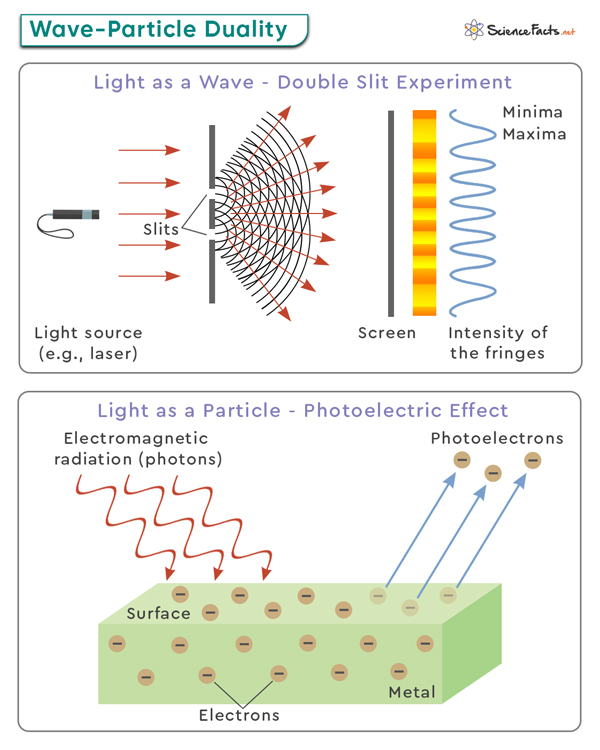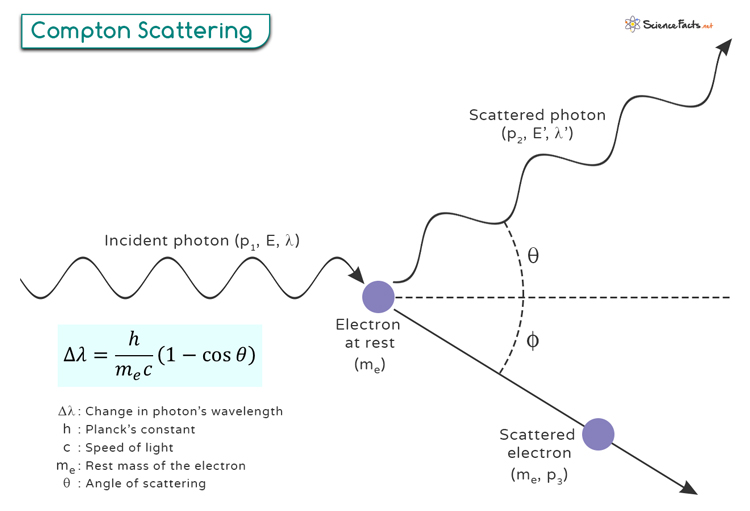Photon
A photon is the most basic, discrete packet of energy that light or any electromagnetic wave can exist in. It is an elementary particle with no mass and no electric charge, yet it carries both energy and momentum, allowing it to travel through space and interact with matter.
Historical Development
The concept of the photon significantly changed how scientists understand light and energy. In the early 1900s, Albert Einstein proposed the idea of light as tiny energy packets, or quanta, while studying the photoelectric effect – a phenomenon where light shining on a metal can release electrons. At the time, scientists could not explain why only certain colors (frequencies) of light caused this effect, regardless of brightness. Einstein’s explanation that light is made of tiny energy packets we now call photons challenged existing physics and helped establish quantum mechanics, the study of atomic and subatomic particles.
Basic Properties of a Photon
- Wave-Particle Duality: Photons display both wave and particle characteristics, behaving as waves in phenomena like interference (double-slit experiment) and as particles in interactions such as the photoelectric effect.
The example image below highlights how light, composed of photons, exhibits both wave and particle characteristics.
- Speed: Photons travel at the speed of light, about 3 x 108 meters per second in a vacuum, and this speed remains constant for all photons.
- Energy and Frequency Relationship: A photon’s energy is directly related to its frequency through the equation, E = hν, with higher frequencies corresponding to higher energies.
- Lack of Mass and Charge: Photons are massless and uncharged, allowing them to travel at light speed and interact without experiencing resistance due to electric forces.
- Momentum: Despite having no mass, photons carry momentum, enabling them to exert pressure and transfer energy to other particles.
- Polarization: The polarization of a photon refers to the orientation of its electric field, a property used in applications like polarized sunglasses and optical filters.
- Interaction with Matter: Photons can theoretically travel indefinitely in a vacuum, but they interact with matter through processes such as absorption, emission, and scattering.
The image below illustrates Compton Scattering, a phenomenon where an incident photon collides with an electron at rest.
Energy of a Photon
Photons carry energy in quantized, fixed amounts, known as ‘quanta,’ rather than in a continuous flow in small, specific, meaning discrete packets of energy. This means that each photon has a set amount of energy that comes in discrete packets, depending on its frequency. We can calculate a photon’s energy using the equation:
E = hν
where
– E is the energy
– ν is the frequency
– h is Planck’s constant
The higher the frequency of a photon, the more energy it has. For instance, blue light has a higher frequency than red light, so blue photons carry more energy than red ones.
The idea that photons have specific, fixed energy levels sets them apart from other things in nature, like sound waves, which can have any amount of energy depending on how loud or soft they are.
Photon Applications
- Lasers: Lasers work by emitting photons of the same energy, creating a focused beam of light. This technology is used in everyday devices like barcode scanners and printers and even in medical treatments such as eye surgery (e.g., LASIK).
- Photosynthesis: In plants, photons from sunlight are absorbed by chlorophyll and other pigments in the leaves. This energy is then used to convert carbon dioxide and water into glucose (sugar), which plants use as food.
- Solar Panels: In solar panels, photons from sunlight are absorbed by photovoltaic cells, which then convert the energy from those photons into electricity. It is a key technology in renewable energy, helping to power homes and reduce reliance on fossil fuels.
- Fiber Optics: Photons are used in fiber optics to transmit data as light pulses through glass or plastic fibers, enabling fast and efficient communication over long distances. The internet, television signals, and phone services often rely on fiber optic cables to carry information quickly and over vast distances.
- Medical Imaging: Photons play a crucial role in medical imaging techniques like X-rays, CT scans, and PET scans, where different types of photons pass through the body and create detailed images of internal structures. These imaging methods help doctors diagnose and treat health conditions by providing clear pictures of bones, organs, and tissues.
-
References
Article was last reviewed on Tuesday, June 10, 2025









